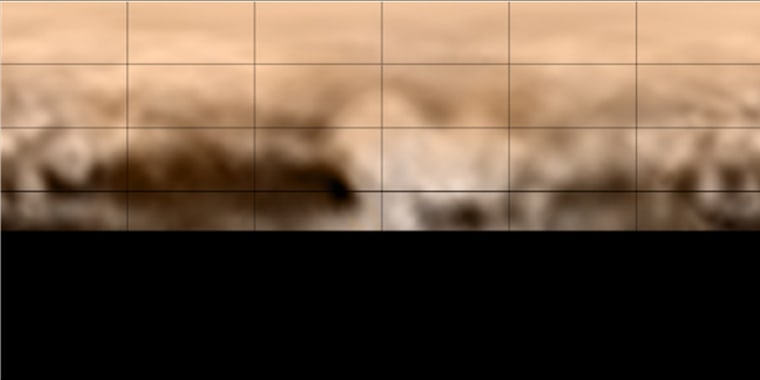Pluto looks especially welcoming in a new photo by NASA's approaching New Horizons probe.
The image, which New Horizons took on Tuesday when it was less than 5 million miles (8 million kilometers) from Pluto, shows a large, heart-shaped feature on the dwarf planet's surface.
The bright "heart" is about 1,200 miles (2,000 kilometers) wide, NASA officials said. To its left lies an 1,860-mile-long (3,000-kilometer-long) dark patch along Pluto's equator that mission scientists are calling "the whale."
New Horizons should get much better looks at both of these features in the coming days — especially during its July 14 flyby, when the probe will zoom within 7,800 miles (12,500 kilometers) of Pluto's surface.
"The next time we see this part of Pluto at closest approach, a portion of this region will be imaged at about 500 times better resolution than we see today," Jeff Moore, New Horizons' geology, geophysics and imaging team leader, said in a statement.
The New Horizons team received the new photo early Wednesday morning. It takes about 4.5 hours for data and communications to travel from the spacecraft to Earth, since the two are separated by about 3 billion miles, or 4.8 billion kilometers.
The image is the first one to come back down to Earth since Saturday, when New Horizons suffered a glitch that briefly sent it into safe mode, NASA officials said. The spacecraft is now back to normal and has begun its close-approach science operations — a choreographed sequence of observations that lasts nine days.

"The whale" is also featured in New Horizons' latest color map of Pluto, which is based on photos that New Horizons took from June 27 to July 3.
The map also reveals a bright, 200-mile-wide (320-kilometer-wide) ring-shaped feature lying just above the whale's tail. The doughnut-like feature resembles impact craters and volcanoes seen on other solar system bodies, but mission scientists will wait for more detailed images before they begin a serious attempt at interpretation, NASA said.
This is a condensed version of a report from Space.com. SRead the full report. Follow Mike Wall on Twitter and Google+. Follow Space.com on Twitter, Facebook and Google+.